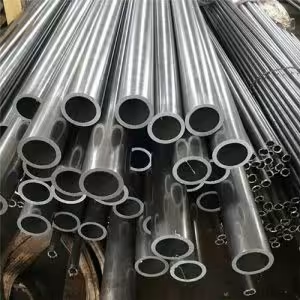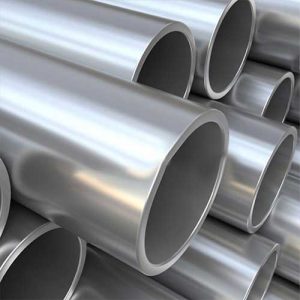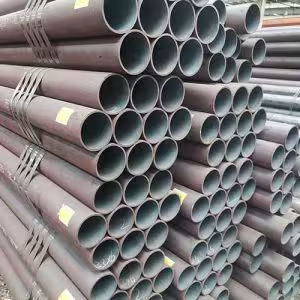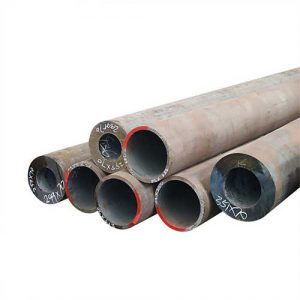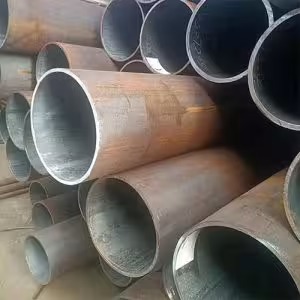Welcome to My Blog!
Before we dive into the content, I’d love for you to join me on my social media platforms where I share more insights, engage with the community, and post updates. Here’s how you can connect with me:
Facebook:https://www.facebook.com/profile.php?id=61565500692293
Now, let’s get started on our journey together. I hope you find the content here insightful, engaging, and valuable.
Introduction
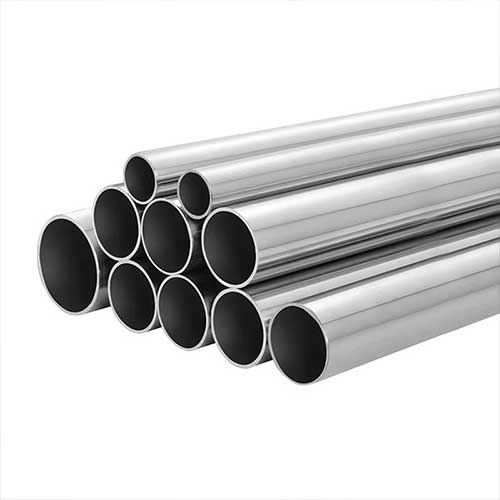
In the world of piping materials, seamless stainless steel pipes stand out for their strength, reliability, and aesthetic appeal. These pipes are preferred in applications where durability and hygiene are paramount. This guide will explore the properties, applications, and selection criteria for seamless stainless steel pipes, providing you with the knowledge to make the best choice for your needs.
Understanding Seamless Stainless Steel Pipes
To make an informed decision, it’s essential to understand what sets seamless stainless steel pipes apart from other types of pipes.
What Are Seamless Stainless Steel Pipes?
Seamless stainless steel pipes are tubular products made from a single piece of stainless steel, without any welds or seams. They are manufactured through processes like hot extrusion or cold drawing, which create a uniform and consistent pipe structure.
Key Properties of Seamless Stainless Steel Pipes
- Corrosion Resistance: Stainless steel’s chromium content provides a passive film that protects the pipe from corrosion, making it suitable for various environments.
- Strength and Durability: The seamless structure eliminates the risk of seam failure, offering superior strength and longevity.
- Hygienic: The smooth interior surface is easy to clean and resistant to bacterial growth, making it ideal for food processing and pharmaceutical applications.
Applications of Seamless Stainless Steel Pipes
Seamless stainless steel pipes are used in a wide range of industries due to their unique properties.
Industrial Applications
In the industrial sector, seamless stainless steel pipes are used for transporting chemicals, gases, and fluids, where corrosion resistance and strength are crucial.
Construction and Architecture
These pipes are used in building services for plumbing, heating, and air conditioning systems, where their durability and hygienic properties are beneficial.
Food and Beverage Industry
In the food and beverage industry, seamless stainless steel pipes are essential for processing and handling food products due to their ease of cleaning and resistance to contamination.
Pharmaceutical and Medical
For pharmaceutical applications, seamless stainless steel pipes provide a clean and sterile environment, reducing the risk of contamination in the production of medicines.
Factors to Consider When Choosing Seamless Stainless Steel Pipes
When selecting seamless stainless steel pipes, several factors can influence your decision.
Material Selection
The type of stainless steel (e.g., 304, 316) should be chosen based on the specific requirements of your application, such as corrosion resistance and temperature tolerance.
Pipe Size and Thickness
The size and thickness of the pipe should be determined based on the pressure and flow requirements of your system.
Pressure Ratings
Seamless stainless steel pipes are available in various pressure ratings. Ensure the selected pipe meets or exceeds the pressure demands of your application.
Cost-Effectiveness
While seamless stainless steel pipes may have a higher initial cost, their long-term durability and low maintenance requirements can result in cost savings.
A Comparative Analysis of Seamless Stainless Steel Pipes
To assist in your decision-making, here’s a comparative analysis of seamless stainless steel pipes in terms of their properties and performance:
Seamless Stainless Steel Pipe Property Table
| Property | Description | Importance |
|---|---|---|
| Tensile Strength | The ability of the pipe to withstand stretching | Crucial for high-pressure applications |
| Yield Strength | The point at which the pipe begins to deform permanently | Important for maintaining pipe integrity |
| Corrosion Resistance | The ability of the pipe to resist corrosion | Essential for longevity in harsh environments |
| Temperature Resistance | The range of temperatures the pipe can withstand | Vital for applications with temperature fluctuations |
| Hygienic Properties | The ease of cleaning and resistance to bacterial growth | Critical for food and pharmaceutical applications |
This table provides a snapshot of how seamless stainless steel pipes compare to other materials in terms of key properties that are often considered in piping system design.
Making the Right Choice

When selecting seamless stainless steel pipes, consider how the pipes will be used, the environment they will operate in, and the required performance specifications.
Usage and Environment
Consider the frequency of use and the specific tasks the pipes will perform. Will the pipes be used in an environment with corrosive substances, or is it for general-purpose fluid transport? The environment can significantly impact the pipe material and grade selection.
Performance Specifications
Ensure the pipes have adequate strength and corrosion resistance for the tasks at hand. This includes not only the material properties but also the pipe dimensions and pressure ratings.
Budget and Maintenance
Factor in the initial purchase price and ongoing maintenance costs when creating your budget. Seamless stainless steel pipes may have a higher upfront cost, but their durability and low maintenance can lead to significant savings over time.
Sustainability and Eco-Friendliness
Consider the environmental impact of the pipes, including their recyclability and the energy required for their production and maintenance.
Conclusion
Choosing the right seamless stainless steel pipes for your project is a critical decision that can significantly impact the success and longevity of your system. By considering factors such as material selection, pipe size, pressure ratings, and cost-effectiveness, you can select seamless stainless steel pipes that will enhance the efficiency, safety, and sustainability of your operations.
FAQ
Q: What factors influence the selection of pipe material in construction projects?
A: The selection of pipe material in construction projects is influenced by factors such as the type of fluid being transported, pressure and temperature conditions, resistance to corrosion, the environment in which the pipes will be installed, and the cost-effectiveness of the material over the lifecycle of the project.
Q: How often should stainless steel pipes be inspected to ensure their integrity?
A: Inspection frequencies for stainless steel pipes can vary based on the application and environmental conditions. However, it is generally recommended to conduct routine inspections at least annually, with more frequent inspections in harsh or critical environments to check for signs of wear, corrosion, or damage.
Q: Are there any special considerations for joining stainless steel pipes?
A: When joining stainless steel pipes, it’s important to use compatible materials and techniques to maintain the integrity and corrosion resistance of the system. Common joining methods include welding, threading, flanging, and using specialized fittings designed for stainless steel. It’s also crucial to ensure that the joinery is done by qualified personnel to avoid compromising the structural integrity of the pipes.



